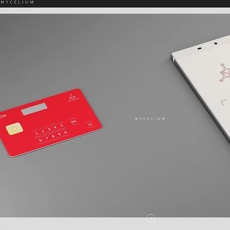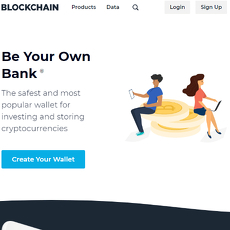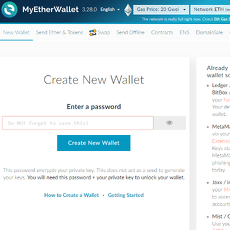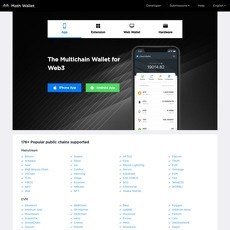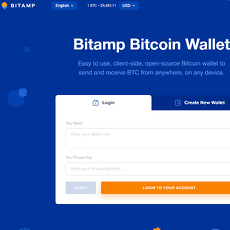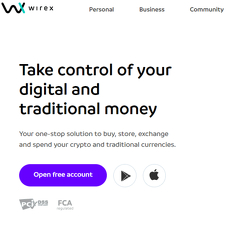Gatehub Wallet Review
Gatehub Wallet
gatehub.net
GateHub Wallet Review Guide: Everything You Need to Know (+ FAQ)
Ever tried choosing a crypto wallet and felt totally lost? Trust me, you’re not the only one. Between endless features, confusing fees, and scary headlines about hacks, it’s totally normal to feel stuck. Maybe you just want an easy way to handle XRP or check out what GateHub is all about—without the stress or technical headache.
You’re in the perfect place. This guide is all about clear, honest answers on GateHub—from how it stacks up, to if it’s really beginner-friendly, and what makes it stand out in a crowded crypto world.
Why Choosing the Right Crypto Wallet is a Big Deal
Let's get real for a second. There are a ton of crypto wallets out there, but picking the wrong one? That can cost you big time—sometimes even everything. It’s not just about losing a few bucks on fees. I’ve heard countless first-hand stories from users who lost access to their crypto because of forgotten passwords, hidden scams, or wallets that just didn’t care about security.
According to a recent Cybereason survey, over 22% of crypto users have lost access to their funds due to wallet mishaps or hacks. Yikes.
The risks aren’t just technical mishaps, either. Some wallets charge sky-high withdrawal fees, have complex interfaces that leave you guessing, or don’t really protect your privacy. Worst case? You wake up to drained accounts—and no way to get your coins back.
- Lost passwords? If your wallet has no recovery option, those coins could be gone forever.
- Hidden fees? Some wallets bake them in for every transaction, eating away at your balance.
- Scams and hacks? Not all wallets take your security seriously—don’t risk it!
Don’t stress, I’ve got you covered
Wallet shopping doesn’t have to be a nightmare. Here’s the plan—I’ll lay out exactly what GateHub is, how it works, the perks (and quirks), and if it’s the right fit for you. Plus, I’ll answer some of the most common GateHub questions I see asked online, so you won’t have to dig through shady Reddit threads or second-guess your choice.
Why listen to me?
I spend my days checking out, testing, and comparing top crypto wallets. No fluffy marketing speak. Just honest, plain-English experience—what works, what doesn’t, and what you actually need to know before you trust any wallet with your coins.
Picking a safe, easy wallet is a game-changer—whether you’re all-in on XRP or just curious about dipping your toes into crypto. Ready to cut through the noise and see if GateHub deserves a spot on your shortlist?
Stick around: Next up, I’ll break down the nuts and bolts of crypto wallets so you know exactly what to look for (and what to avoid), before exploring where GateHub sits in the marketplace. Ever wondered why not all wallets are created equal, or what really makes one stand out? You’re about to find out.
Understanding Crypto Wallets: What Makes GateHub Different?
Let’s be honest—for every person making it big in crypto, there’s someone else who’s lost coins because they picked the wrong wallet. It sounds harsh, but that’s the truth. The right wallet is your digital vault. The wrong one? Well, you don’t want to be that headline on Reddit.
What are Crypto Wallets and Why Do You Need One?
First things first: a crypto wallet isn’t just a “bank account on your phone.” It’s your key to actually using and owning crypto. The basics look like this:
- Online (Hot) Wallets: Cloud-based, accessible from anywhere, but often a bigger target for hackers. Think web wallets like MetaMask or direct exchange wallets.
- Mobile Wallets: Apps on your phone. Super handy when you’re on the move, but your security is only as good as your phone’s—and how careful you are about malware, lost devices, or shoulder surfers.
- Hardware Wallets: USB-like devices (Ledger, Trezor) that store your keys offline. Yes, it’s more hassle…but way tougher for anyone to steal your funds remotely.
- Desktop Wallets: Installed on your computer, sometimes even letting you run your own full node. Secure if you lock down your PC, but not so great if you’re always on the go.
- Paper Wallets: Literally a printout of your keys. Ultra-safe if nobody sees it—but slip up, and you’re toast.
Why bother with all this? Simple: owning crypto without your own wallet is like buying a house and leaving the doors wide open. Exchanges get hacked, computers die, phones get lost. Wallets put control—and risk—back in your hands.
Why Security and Features Matter
People ask me all the time, “Isn’t any wallet good enough?” Nope. Here’s why:
- 2-Factor Authentication (2FA): Having an extra code every time you log in sounds annoying…until you realize most crypto hacks succeed because 2FA is missing. According to a 2022 Chainalysis report, wallets with weak logins and no 2FA were some of the top targets.
- Encryption: If a hacker grabs your data, but it’s encrypted? Game over for them. No encryption? You’re the game.
- Insurance: Some platforms offer insurance for funds stored in their systems. Look for this if you’re planning to keep significant amounts in any online wallet.
- Multi-Currency Support: Switching between wallets for every coin is a headache waiting to happen. All-in-one solutions save time and stress.
- Fiat Support and Extra Features: Want to cash out or deposit directly from your bank? Some wallets do that. Others… don’t even try.
"Security isn't an add-on—it's the price you pay to sleep well at night."
One quick tip: If a wallet makes you jump through a few hoops to sign up or move funds, that’s actually a good thing. If anyone can just breeze through, so can a scammer or a bot.
GateHub’s Place in the Market
So, where does GateHub fit in all of this? Here’s what stands out:
- Tailor-Made for XRP: Some wallets treat XRP as an afterthought. GateHub, though, puts it front and center. If you’re deep into the XRP Ledger, this isn’t just convenient—it’s strategic.
- Direct Fiat Transfers: Most wallets stop at holding crypto. GateHub lets you both store dozens of coinsand move money in and out from your bank. That’s a massive plus if you don’t want to rely on exchanges or multiple apps.
- User Experience: Not everyone has time to dig through technical docs. GateHub aims for the “open your laptop, click, done” simplicity—without losing out on essential features like 2FA and strong encryption.
- Web-Based Convenience: Some will always prefer cold storage, but if you need fast access from anywhere, GateHub gets it right. Just know: the convenience trade-off always comes with some risk, so keep your login info under lock and key!
Think about it: How many wallets have you checked that actually make it easy to get your fiat in and out? Could you trust them with serious money? Or do they just make big promises and leave you stuck when you need support most?
With scams and horror stories making the rounds every week, it’s worth asking—how does GateHub stack up when those coins are actually on the line? There’s a lot more to discover here, including real user experiences (not just slick marketing). Curious what it’s actually like to use GateHub—and whether its features are as good as they sound? Let’s dig into exactly what GateHub is made of, what it offers, and who it works best for in the next section. Trust me, you don’t want to miss this.
What Is GateHub? Features, Reputation, and Supported Coins
Ever wish you could manage your XRP and other cryptos without jumping through a dozen hoops? That’s exactly what caught my attention when I first started using GateHub. It markets itself as a lot more than just a wallet, which is probably why it has become such a go-to, especially if you’re in the XRP crowd.
A Little About GateHub
GateHub’s story starts back in 2014, originally built as an interface for the XRP Ledger. While most crypto wallets were just trying to keep your coins safe, GateHub went a step further—aiming to make them usable, accessible, and, yes, quite easy to move around, especially for XRP holders. Over the years, its clean layout and focus on both the seasoned user and total beginner have given it a pretty devoted following.
“Simplicity is the ultimate sophistication.”
—Leonardo da Vinci, and honestly, this fits GateHub’s vibe.
The platform’s reputation isn’t without bumps, but for many users, its commitment to make XRP management less of a headache counts for a lot.
GateHub’s Features
Let’s break it down. GateHub isn’t just a safe hiding place for your crypto keys. It’s—
- An intuitive online wallet: No, you don’t need to be a techie, and yes, it’s browser-based for easy access.
- Built-in exchange: Swap between XRP, Bitcoin, Ethereum, and a few others right from your dashboard. No need to use another site just to trade.
- Fiat on/off ramps: Want to move money between your bank and your GateHub account? It’s possible with EUR, USD, and GBP, making things like cashing out or funding your wallet much less of a headache.
- Simple, elegant UI: Whether you’re sending XRP to a friend, checking your balance on a break, or watching market movements, everything feels just... natural.
- Wallet Connect & integrations: There’s growing support for connecting GateHub to third-party platforms. (NFTs, anyone? Stay tuned for more on that.)
What I’ve seen is that GateHub’s all-in-one approach solves the “too many apps, too much confusion” problem that a lot of wallets create. You can send, receive, exchange, and even manage multiple accounts—without needing to remember five different passwords.
What Cryptos Can You Hold on GateHub?
The first thing most people think about with GateHub is XRP—and for good reason. The platform has always been a champion for the XRP Ledger, and it’s still one of the fastest, frictionless ways to store and move XRP.
But that’s not the whole story:
- XRP—the main star, fully supported, fast transactions.
- Bitcoin, Ethereum, Bitcoin Cash, and Ethereum Classic are all supported as well. You can hold, send, and swap these without leaving the site.
- Fiat currencies: EUR, USD, and GBP balances function almost like e-money on the platform—you can deposit, withdraw, and exchange.
- Other assets: New tokens based on Ripple’s system often get added, though availability can shift.
That said, GateHub is not a “supports every new coin” type of wallet. It’s quality over quantity, focusing on the most practical and highest-demand assets for active users, with a strong nod to XRP.
Security and Reputation
You’re probably thinking: “Sounds good, but how safe is it?” I get it—no point in finding something simple or versatile if your funds are at risk.
GateHub uses a mix of multi-layered security tools to keep users protected:
- Two-Factor Authentication (2FA): Standard these days, but GateHub has made it easy to set up, and you should do it, no excuses.
- Encryption: Your account details and keys are encrypted so that not even GateHub staff can just walk in and take a look.
- Account recovery & anti-phishing: Extra protection for when you (or your uncle who just discovered crypto) forgets a password or get suspicious emails.
Now let’s talk reputation. GateHub’s had its share of headlines—yes, even a well-documented hack back in 2019. While that shook up trust for a while, to GateHub’s credit, they doubled down on security updates, tightening up processes and improving user support. In crypto, almost every platform has its scars, but the real test is how they react and rebuild. The support forums and Reddit threads today are far more positive, with many praising the interface, restoration steps after issues, and commitment to transparency.
What I see consistently is that users who prioritize XRP and want a balance of security and simplicity tend to stick around. Still, it pays to follow best security practices—strong passwords, 2FA, regular account checkups—because even the best wallets can’t protect you if you slip up.
So... what’s it actually like to use GateHub every day? Curious about account setup, sending/receiving, or getting your cash out to your bank account? You’re about to see just how GateHub works in real life (and what you should look out for). Ready for some hands-on action? Let’s step into the real thing—coming up next!
GateHub in Action: How to Use It for Everyday Crypto Tasks
Ready to see if GateHub actually makes crypto easier—or is it just all talk? Let’s pull back the curtain and walk through what it’s like to use GateHub for daily crypto tasks. Because owning a wallet shouldn't feel like cryptography class, right? Let’s see if GateHub simplifies, or complicates, your life.
Signing Up and Setting Up a Wallet
Starting with GateHub is refreshingly simple—no tech PhD needed. Here’s how to get rolling:
- Register on the GateHub website: All you need is a valid email and a strong password. They’ll send you a verification link, so check your spam folder if you don’t see it right away.
- KYC (Know Your Customer) process: To unlock all deposit and withdrawal features, you’ll need to upload an ID and proof of address. Yes, it’s an extra step, but it’s there for legal compliance and extra safety.
- Activate your XRP Wallet: Here’s a classic XRP quirk: you need a minimum deposit of 1 XRP to activate your wallet. That ensures your address is alive on the XRP Ledger. Don’t let this surprise you—1 XRP is locked in as the network reserve, and you can’t withdraw it. This is standard for all XRP wallets, not just GateHub.
It’s about a 5-to-10-minute process if you’ve got your documents handy. People often ask, "Can’t I skip the 1 XRP deposit?"—but nope, that’s just XRP’s world. It's a small price to pay for a working wallet.
Sending, Receiving, and Storing Crypto
Once you’re set up, GateHub makes sending and receiving digital assets surprisingly smooth:
- To receive crypto, copy your address or use GateHub’s QR code generator—super handy for in-person swaps.
- Sending is easy: Pick your asset, enter the recipient’s address, hit send, and confirm. If you mess up the address, GateHub’s UI gives you one last chance to catch mistakes, which I wish every wallet did.
- Supports crypto and fiat: You’re not limited to XRP—send or receive BTC, ETH, and others, or even transfer USD or EUR if your account is verified.
If you’ve ever felt jittery about clicking “Send” on a transfer, you’re not alone. I’ve seen horror stories online—studies from Chainalysis have shown up to 20% of crypto losses occur during transfers! GateHub’s extra confirmation step helps cut that risk.
Selling, Withdrawing, and Transferring to Your Bank Account
Selling your crypto or cashing out to your bank should be painless. Here’s how GateHub handles it:
- Sell crypto directly on the wallet: Use the built-in exchange to sell XRP, BTC, or ETH for fiat. Pick your trading pair and amount, then review the rates and fees before sending.
- Withdraw to your bank: Link your bank (USD, EUR, GBP are supported). Once linked, enter your withdrawal amount and confirm.
- Know your limits and fees: Withdrawal amounts can vary, and fees depend on the coin and fiat currency. For example, withdrawing EUR via SEPA is generally cheaper than withdrawing USD via wire.
"The bitterness of poor service remains long after the sweetness of low fees is forgotten."—This rings true in crypto, where user experience really matters!
I’ve helped users who were caught out by withdrawal limits or slow bank transfers. Always double-check limitations and fees in GateHub’s FAQ or inside your account dashboard before moving big sums.
Using GateHub for International Transfers
One of GateHub’s standout tricks: making global remittance feel less like a headache. Here’s what stands out:
- Send USD, EUR, or GBP internationally: GateHub leverages the XRP Ledger for fast, low-cost transfers—sometimes settling in seconds, not days.
- Convert on the fly: Swap crypto for fiat and vice versa without needing a third-party exchange.
- Good for freelancers and family support: If you’re sending money home or getting paid in crypto, GateHub can cut the cost vs. traditional bank wire fees by a lot (I’ve seen users save 50%+ compared to banks!).
Global money movement used to be a pain, but I’ve watched users send funds from Europe to Asia in minutes. No more crossing fingers at the Western Union counter—GateHub makes this world much smaller.
All these features sound great—but I bet you already have a question or two itching at you. Wondering how to move money from GateHub to your bank, or what kinds of pains to look out for? Hold tight—next up, I’ll tackle the most burning GateHub questions I see every week (with the real answers you won’t find buried in a helpdesk). Which question do you need answered first?
FAQs: Real Answers to Common GateHub Questions
Ready for no-nonsense, straight-to-the-point answers about GateHub? I’ve pulled together the questions I get all the time—along with insider tips and hard-earned lessons from actual users and my own testing.
How do I transfer money from GateHub to my bank account?
This is the biggie—everyone wants to know if GateHub really lets you cash out your crypto into real-world money. The answer is yes, but there are a few steps and details to get right.
- Bank linking: First, you’ll need to verify your identity and link a supported bank account. GateHub follows KYC laws (Know Your Customer), so have your docs handy.
- Convert crypto-to-fiat: If you’re holding XRP or another crypto, you’ll need to trade it for USD, EUR, or whichever fiat GateHub currently supports for withdrawals. The built-in exchange makes this relatively smooth.
- Withdraw: Once you have fiat in your GateHub wallet, go to the ‘Wallet’ section, pick your currency (e.g., USD), then select Withdraw. Enter your bank details and amount, confirm the transaction, and you’re set.
- Timing and fees: Most wire transfers take 1-3 business days, but could take longer if your bank or region has extra checks. Expect a fee—GateHub is transparent about these, so check their fee page before you move large amounts.
I’ve seen reports and feedback about quick withdrawals, but some users with non-European banks experienced extra delays or support hitches. If you ever get stuck, their support page or community forum is reasonably active.
What’s GateHub mainly used for?
GateHub’s sweet spot is people who want an all-in-one hub for XRP (and a handful of other cryptos), easy swaps, and the ability to move value between crypto and fiat. It’s particularly popular for:
- Long-term holders (HODLers): Especially those looking to keep XRP in one spot, but with the option to cash out.
- Casual traders: If you want to buy, sell, or swap supported coins without juggling multiple sites.
- Remittance and international transfers: Sending money abroad is much faster with XRP on GateHub than through old-school banks, especially for USD or EUR corridors.
For day-traders looking for advanced order books or leverage—look elsewhere. For everyday users needing crypto-to-bank-account flows, GateHub is one of the more approachable options out there.
What’s the minimum XRP deposit for GateHub?
This one irritates a lot of first-time XRP users! Due to how the XRP Ledger works, every new XRP wallet (on GateHub or anywhere else) requires a reserve—currently 1 XRP as the minimum deposit. You must send at least 1 XRP to activate your GateHub wallet. Here’s the catch: the reserve can’t be withdrawn or used. It’s locked as a security feature to prevent spam attacks on the XRP network. So, don’t panic when that XRP "disappears"—it’s just part of using the system. If you need to move everything out and close your GateHub account, that 1 XRP reserve is still stuck until the global standard ever changes.
How do I withdraw USD (and other fiat) from GateHub?
Let’s break it down step-by-step:
- First, verify your account for fiat withdrawals. GateHub asks for ID or passport, and sometimes proof of address.
- Head to your wallet and make sure you’ve swapped crypto to the fiat currency you want—USD and EUR have the broadest support.
- Click ‘Withdraw’, pick the currency, and choose your linked bank account.
- Enter the amount and confirm—it’s that simple in most cases.
- Watch out for withdrawal fees and supported country lists—they can change. Double-check on the official help page if your region is good to go.
Pro tip: Sometimes banks flag crypto-related transfers, so I always recommend starting with a small test withdrawal. If all goes well, you can move larger sums with more confidence.
Other Common Issues or Questions
Here’s the honest scoop on some “gotchas” GateHub users sometimes run into:
- Support speed: During bull markets or heavy traffic, support tickets can take time—some users report waiting a week or more. Always save your transaction details and wallet backup codes in case you need to escalate.
- Security best practices: Enable 2FA from day one. Phishing attacks in crypto are relentless. Double-check email sender addresses—there have been cases of lookalike emails trying to steal passphrases. GateHub itself learned this lesson after a major hack years ago, and has improved security, but the end-user is always the first line of defense.
- Account limits: Tiered depending on your country and if you’ve completed verification. Daily withdrawal maximums might apply—these are all explained at the time you verify, so read the fine print or see the support center.
- Migration of assets: If you’re moving from GateHub to another wallet, remember the XRP reserve—plan your moves so you’re not surprised by mysterious “missing” coins.
If you’re looking for a wider perspective or want to compare all the latest wallets (mobile, hardware, paper—each suiting a different lifestyle), I highly suggest checking out my curated links and reviews: Best Cryptocurrency Wallets. If you’re a security fanatic or a global traveler, that’s where you’ll find some hidden gems and my testing notes.
Still have a burning question or worried about something unique? Wondering if there’s a “perfect” wallet for your next move? Stick around for the next section—I’ll get into whether GateHub is really the right fit for you, and share a few wallet options that might suit you even better. What if the next answer you get saves you a ton of stress, cash, or even your crypto itself? Let’s keep going…
Is GateHub Right for You? Final Thoughts and Resources
Pros and Cons: The Honest Take
Let’s get real—the choice of a crypto wallet can make or break your entire crypto experience. After testing and reading through feedback from GateHub users (and dealing with a fair share of my own headaches), here’s how the platform stacks up:
- Pro: Super XRP Friendly
If you’re an XRP fan, GateHub feels made for you. Fast transactions and tight XRP integration make it a favorite for anyone sending or storing Ripple. - Pro: All-in-One Simplicity
You get a wallet, exchange, and basic fiat on/off ramp in one place. No need to hop between endless tabs or worry about transferring to risky third-party services. - Pro: International Support
Whether you’re in the EU or elsewhere, the bank transfer options for fiat are solid (if you’re in a supported country, anyway). - Con: Not for Privacy Diehards
KYC is a must here. If you want pure privacy or absolute control (like with hardware wallets), this probably isn’t the home for your main stack. - Con: Fee Structure and Limits
Bank withdrawals have their quirks—fees, country restrictions, and that infamous 1 XRP reserve. Also, they’ve had some downtime issues in the past during market chaos. - Con: Only Some Coins
GateHub is best if your main coins are XRP and a handful of others. If you want broad ERC-20 support or loads of altcoins, you might get frustrated.
So, who actually wins here? GateHub is a great fit for:
- Crypto users who need smooth XRP transactions.
- People sending or receiving money internationally with a focus on both crypto and fiat.
- Those who want a wallet + basic exchange in one place, without the hassle of juggling tons of accounts.
If you’re all about privacy, need massive coin support, or handle huge volumes, you may want to keep looking. Think of GateHub as the friendly entry point for XRP and a practical everyday wallet, not a vault for your life savings.
Useful Resources and Where to Go Next
The world of wallets is way bigger than any single platform. If you want to keep your research going, here are a few paths I recommend:
- Looking for hardware-grade security or pure privacy? Don’t miss my Best Wallets List. I keep it up to date and brutally honest, with everything from Ledger and Trezor to ultra-simple mobile wallets.
- Want to compare wallet features and fees? Check out detailed comparisons and guides across the site. You’d be amazed what a little side-by-side research can save you.
- Just starting out? My resource section has wallet basics, trading safety tips, and the stuff I wish someone told me on day one.
- Curious about security? I always suggest reading up on two-factor authentication, backup strategies, and common scams—most hacks happen due to everyday mistakes, not tech failures.
Staying one step ahead isn’t about memorizing every detail. It’s about knowing where to look for help and not being afraid to ask the right questions.
Wrap Up: Make Your Crypto Life Easier
The perfect wallet isn’t just about flashy features, it’s about what fits your own habits and how protected your coins are. GateHub covers a lot of ground for XRP lovers and international senders, but it’s not the only show in town. Whatever you choose—whether it’s GateHub, a slick hardware device, or something super simple—always keep your security top of mind.
Seriously, it’s worth the extra five minutes to set up good backups and double-check your security routine. Studies show (such as this Chainalysis report) that over 20% of crypto lost to theft happens through preventable means like poor password management or phishing.
If you’re ever unsure or want honest, no-nonsense answers, my main news page is a good place to start. Let’s keep your crypto journey simple, safe, and—most of all—stress-free.



